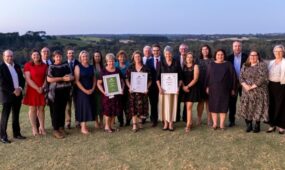Uncovering the beauty and danger of outback South Australia
Regional
Photographer Alex Frayne continues to uncover South Australia through his camera, capturing the unpredictable beauty of the outback as he traverses the Far North and Eyre Peninsula for his next book.

Sign up to receive notifications about new stories in this category.
Thank you for subscribing to story notifications.

Continuing on from his 2020 book Landscapes of South Australia, published by Wakefield Press, Alex Frayne is capturing what he describes as a juxtaposition between beauty and danger in the outback on 35mm film stills.
“I think [the outback] is perilous, beautiful, rugged, huge [and] resilient,” Frayne says.
“To actually see that resilience and nobility of survival in those places of extremities and distance and weather is quite something, and to see it thriving is even better.
“There are these kinds of, what I call, eccentricities that you uncover. And that eccentricity derives from the fact that their lived experience is so different to yours coming from the city.”

Tarcoola, Alex Frayne
While Landscapes focused mainly on South Australia’s southern regions, Frayne is continuing to explore the state’s Far North and the Eyre Peninsula, using his mother’s childhood at a pastoral station in Port Augusta as his departure point for inspiration.
Frayne is especially interested in preserving through film the unique fragments of towns that fell victim to the boom-bust of the gold-mining era and restructuring of Australia’s railway lines.
Tarcoola, 416 kilometres northwest of Port Augusta, was one of those casualties. The train still runs through Tarcoola but doesn’t stop and what’s left is a ghost town.
“When you go to a ghost town, you’re looking right into the past, but you’re standing in the present,” says Frayne.
“So you get this kind of frisson between what was and what is.
“Wherever you point the camera there is interest, you know… which I guess my job is to is to give voice to that strange aesthetic of what we would call a ghost town.”
Frayne says shooting the ocean is a personal favourite and he therefore ventured to the surfing outpost of Cactus Beach.
“The surfing mythology of Cactus Beach loomed large before I went there, and when I went there I found this most beautiful meeting of ocean and land,” Frayne says.
“I think mythology and myth are attractive to artists, and the idea of going to see what it is that is mythological for yourself.
“You see water coming in from the Antarctic, the crashing waves and huge sand dunes which loom behind the beaches all along the West Coast, and I think that can’t be beaten – I think that’s something you have to see.”

Motel, Alex Frayne
Each of Frayne’s photographs renders itself an almost love letter to the beauty and danger etched into South Australia’s outback environment. However, Frayne prefers to focus on the technicality of his shot, letting his audience fill in the storytelling gap.
“To witness [the outback], and then to discover it, explore it and rationalise it and put it in some sort of chronology – that’s where photography can be really powerful as an artistic medium,” Frayne says.
“The intent behind the shot has to come from somewhere strong and solid, and a place of knowledge, or else you are just merely a tourist taking photo from the side of the road – which is a place I don’t ever want to be.”
Jump to next article




